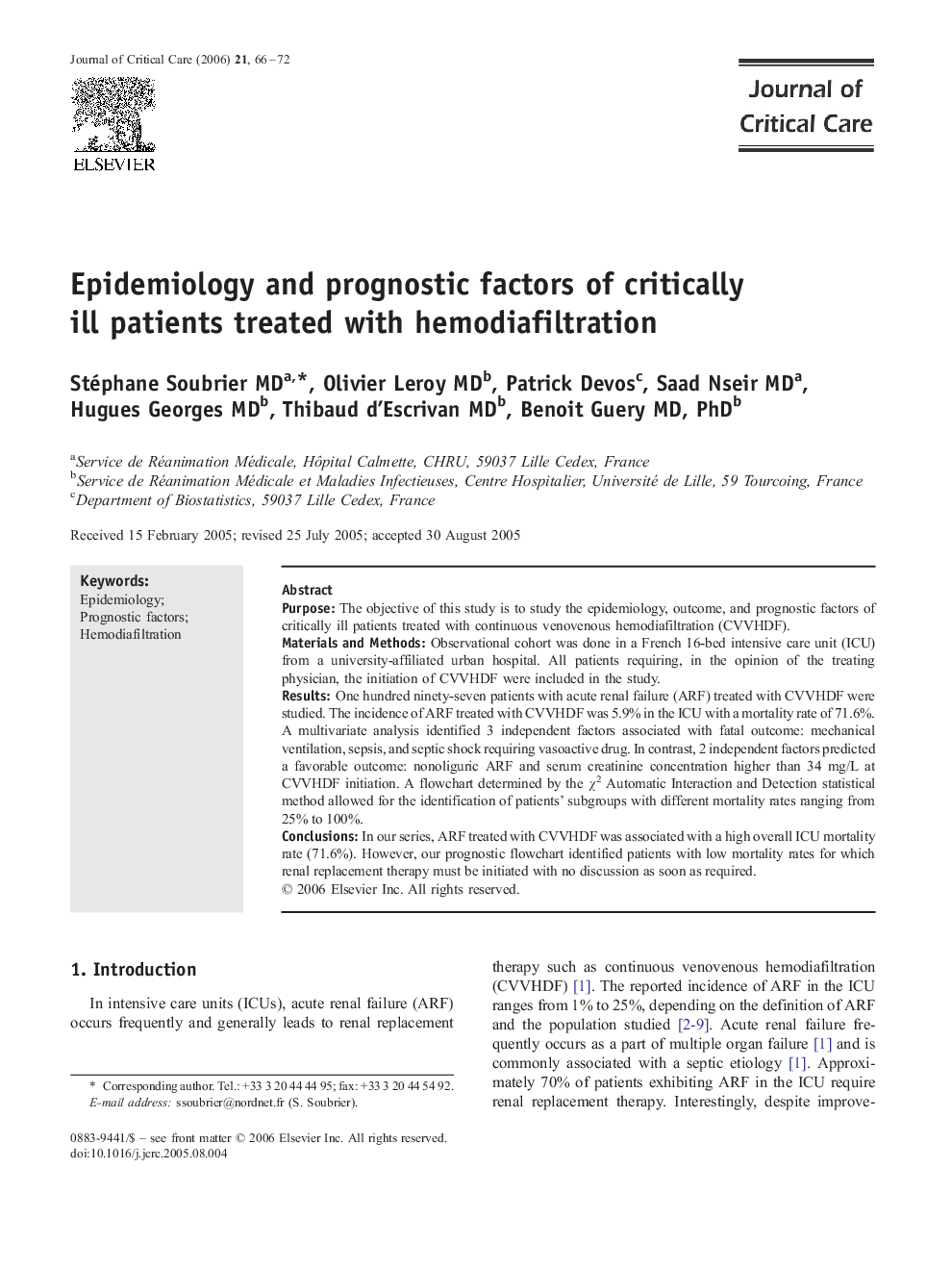| Article ID | Journal | Published Year | Pages | File Type |
|---|---|---|---|---|
| 2765433 | Journal of Critical Care | 2006 | 7 Pages |
PurposeThe objective of this study is to study the epidemiology, outcome, and prognostic factors of critically ill patients treated with continuous venovenous hemodiafiltration (CVVHDF).Materials and MethodsObservational cohort was done in a French 16-bed intensive care unit (ICU) from a university-affiliated urban hospital. All patients requiring, in the opinion of the treating physician, the initiation of CVVHDF were included in the study.ResultsOne hundred ninety-seven patients with acute renal failure (ARF) treated with CVVHDF were studied. The incidence of ARF treated with CVVHDF was 5.9% in the ICU with a mortality rate of 71.6%. A multivariate analysis identified 3 independent factors associated with fatal outcome: mechanical ventilation, sepsis, and septic shock requiring vasoactive drug. In contrast, 2 independent factors predicted a favorable outcome: nonoliguric ARF and serum creatinine concentration higher than 34 mg/L at CVVHDF initiation. A flowchart determined by the χ2 Automatic Interaction and Detection statistical method allowed for the identification of patients' subgroups with different mortality rates ranging from 25% to 100%.ConclusionsIn our series, ARF treated with CVVHDF was associated with a high overall ICU mortality rate (71.6%). However, our prognostic flowchart identified patients with low mortality rates for which renal replacement therapy must be initiated with no discussion as soon as required.
